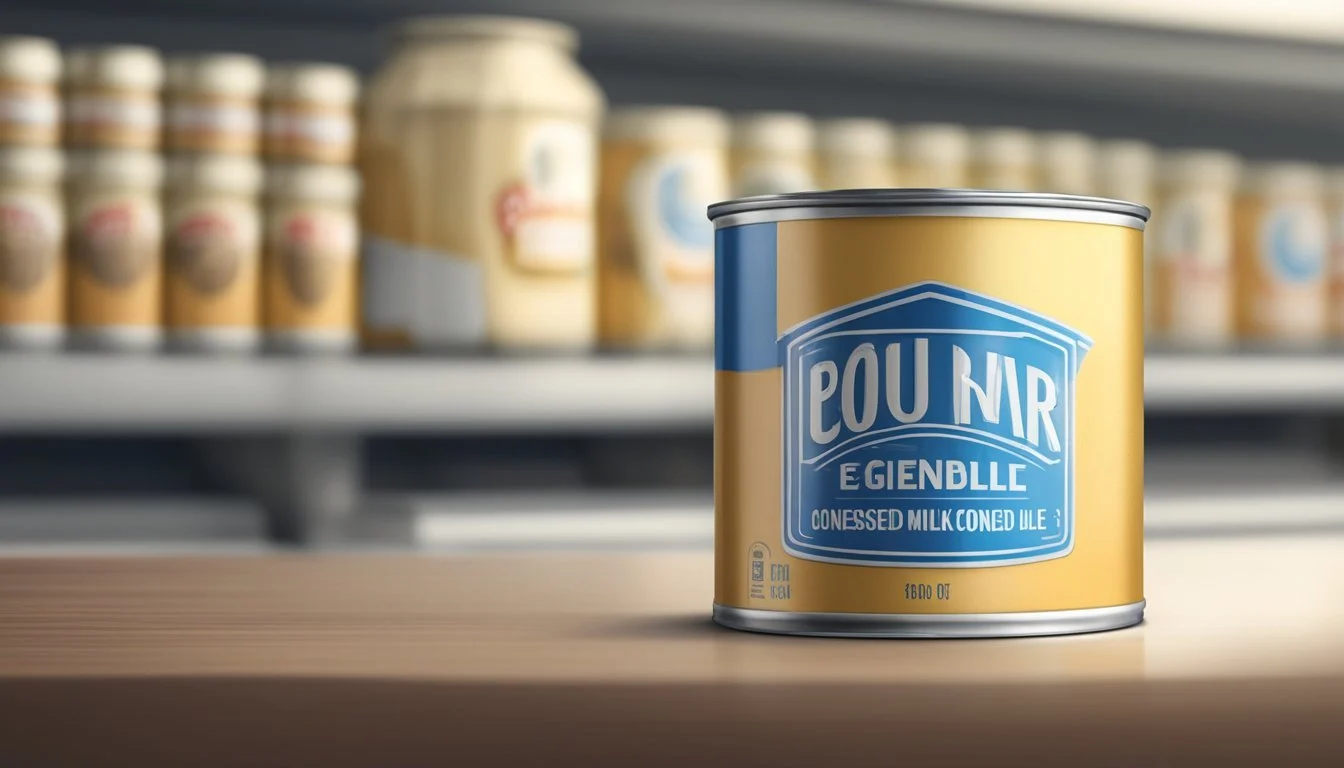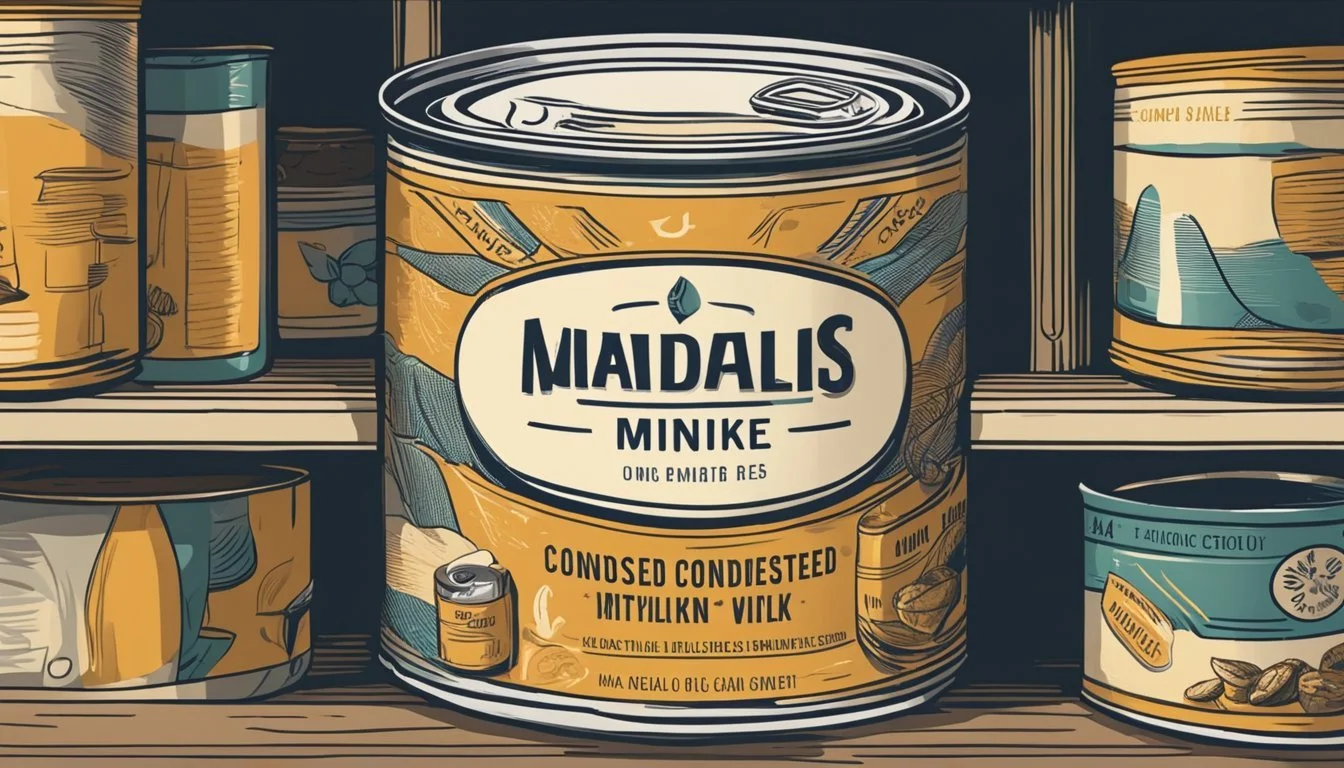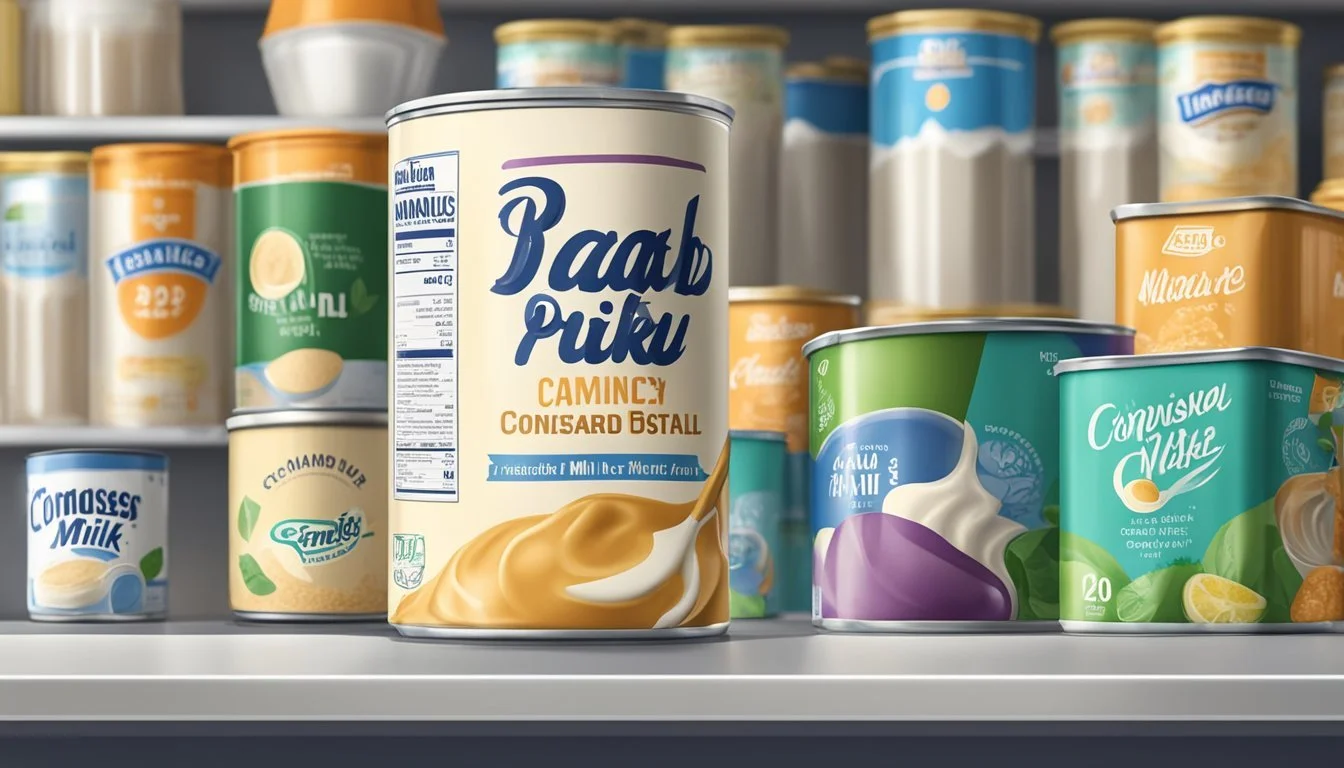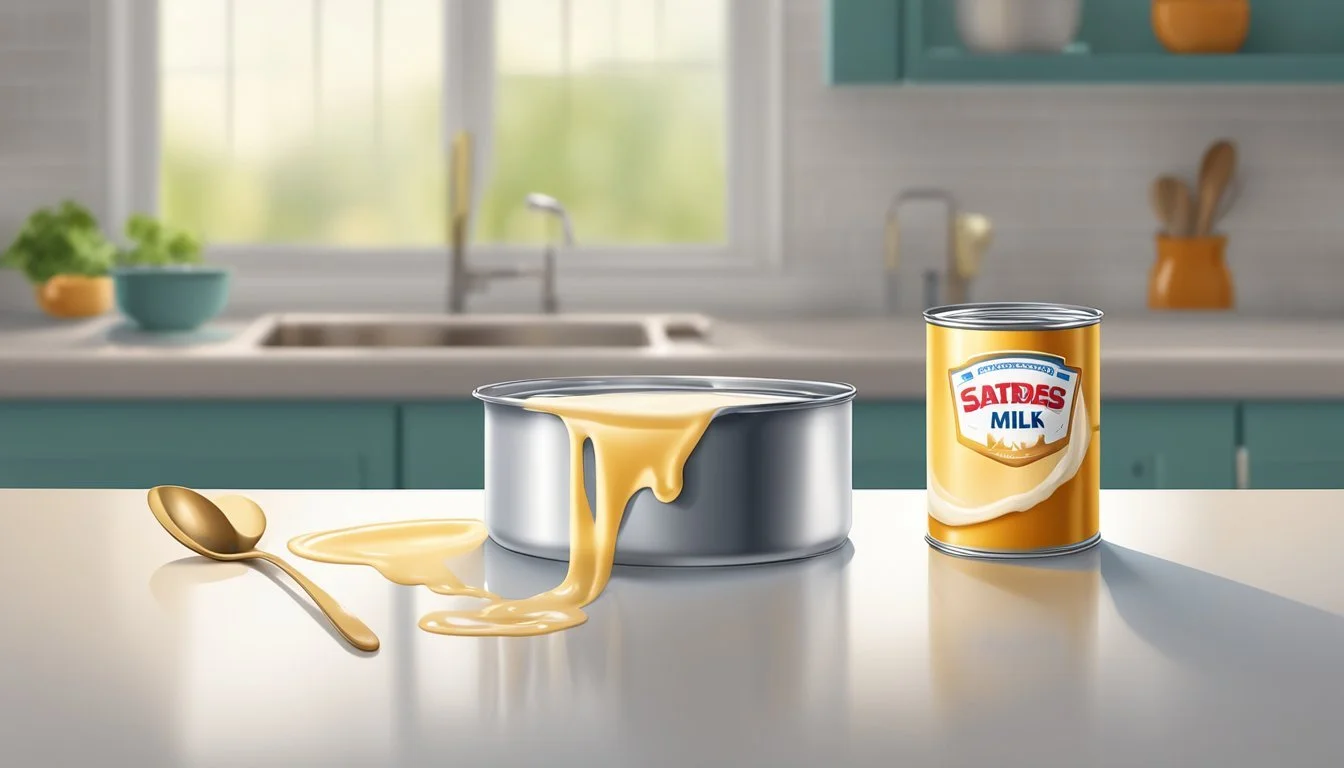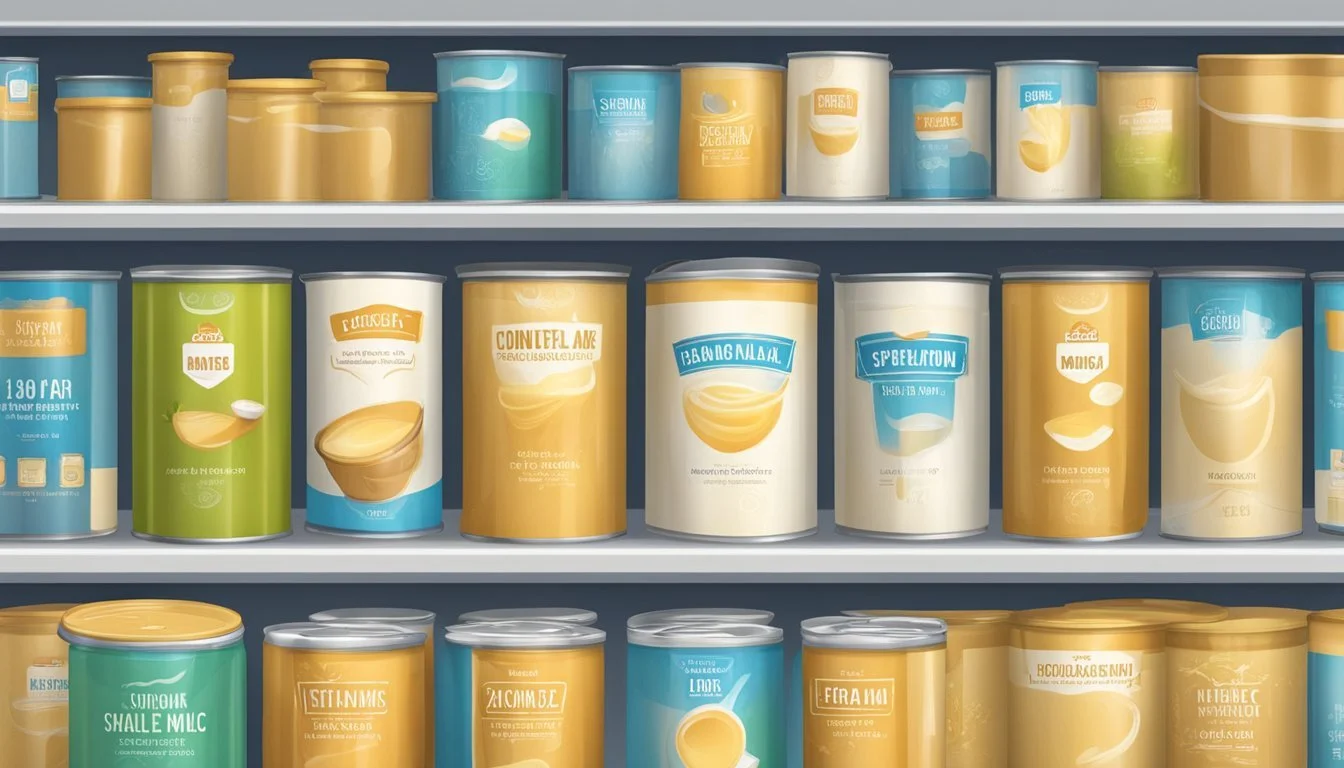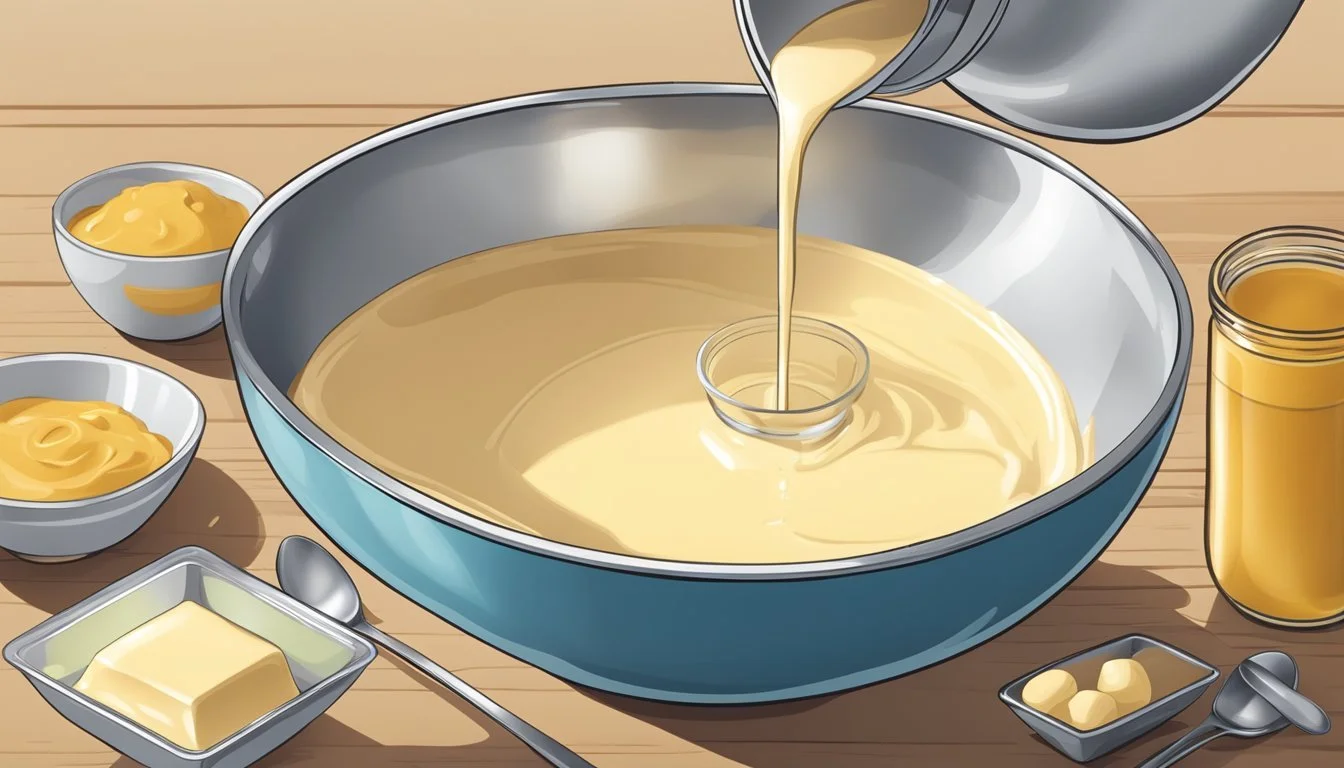Does Condensed Milk Go Bad?
Understanding Shelf Life and Spoilage Signs
Condensed milk is a popular dairy product with a notably sweet taste and a thick consistency, achieved through the removal of water from cow's milk and the addition of sugar. Its creation is designed to extend longevity, allowing it to be kept for a significant duration compared to regular milk. This shelf stability is a key attribute, making it a staple in pantries around the world and a common ingredient in many desserts and beverages.
Despite its long shelf life, condensed milk can spoil. An unopened can of condensed milk is typically safe to consume well beyond the "best by" date if stored correctly in a cool, dry place. However, once opened, the milk should be transferred to an airtight container, refrigerated, and used within a few days to maintain quality and safety.
It's important to recognize the signs of spoilage such as discoloration, off-smells, or texture changes. While the high sugar content acts as a preservative and extends the product's usable period, it does not render the condensed milk immune to bacterial growth or spoilage, especially once exposed to environmental factors after opening.
Understanding Condensed Milk
In the diverse world of dairy products, condensed milk holds a unique place as a versatile ingredient commonly used in numerous recipes. It comes in two primary forms, sweetened and unsweetened, each with its specific uses in cooking and baking.
Definition and Types
Condensed milk refers to cow's milk from which water has been removed, concentrating its contents. It typically comes in two types:
Unsweetened Condensed Milk: Also known as evaporated milk, this product does not contain added sugar.
Sweetened Condensed Milk: This is condensed milk with added sugar, which not only sweetens it but also extends its shelf life due to sugar's preservative qualities.
Manufacturing Process
The manufacturing process of condensed milk is straightforward yet precise:
Milk Selection: Fresh cow's milk is chosen for quality and purity.
Evaporation: Water content is reduced by heating the milk.
Sweetening: For sweetened condensed milk, sugar is added during the evaporation process.
Cooling and Packaging: The thick liquid is cooled and then packaged in a sterile environment to prevent contamination.
Sweetened condensed milk is sealed in cans that keep it safe for consumption for a long period when stored properly, even without refrigeration. Its counterpart, unsweetened condensed milk, follows a similar manufacturing process but without the addition of sugar.
Determining Quality and Freshness
When assessing the quality and freshness of condensed milk, one should consider visual, olfactory, and taste evaluations. It is important to note the color, smell, taste, and texture to determine if the condensed milk is still fresh or has spoiled.
Visual Indicators
Color: Fresh condensed milk should have a pale cream to slightly yellowish hue. Any deviations, such as a darker color or the presence of mold, suggest spoilage and the product should not be consumed.
Texture and Consistency: Condensed milk should be uniform and smooth. If one observes lumps or a heterogeneous texture, this may indicate it is no longer fresh.
Olfactory Assessment
Smell: Spoiled condensed milk often emits a sour or unpleasant odor. One should discard any cans that exhibit such off-putting smells, as this is a clear indicator the product is no longer suitable for consumption.
Taste Evaluation
Taste: While it is not advisable to taste test if other indicators suggest spoilage, fresh condensed milk will have a sweet, creamy flavor. Any sourness or off flavors is a sign that the milk has gone bad.
By carefully using these sensory checks, one can confidently determine if their condensed milk is fresh and of high quality or if it has fallen victim to spoilage.
Storage Fundamentals
Proper storage maximizes the shelf life of condensed milk, preserving its quality and safety. The right conditions can mean the difference between a well-preserved can and a spoiled one.
Best Practices for Unopened Cans
Unopened cans of condensed milk should be stored in a cool, dry pantry away from sources of heat and moisture. They typically enjoy a long shelf life if kept at a stable temperature. To ensure freshness, one should heed the following tips:
Store cans in a pantry at room temperature, away from sunlight.
Check that the packaging is sealed and free from dents, rust, or swelling.
Rotate stock regularly, using older cans first to prevent exceeding the use-by date.
Recommendations for Opened Contents
Once a can of condensed milk is opened, the contents should be transferred to an airtight container and refrigerated. This helps maintain quality and prevent spoilage. Here are key storage strategies:
Transfer unused condensed milk into an airtight container to prevent odor absorption and contamination.
Refrigerate at below 40°F to slow down bacterial growth, which can prolong its shelf life for about a week.
Freezing is an option for longer storage, but it may cause texture changes. Frozen condensed milk should be stored in a freezer-safe airtight container.
Shelf Life Explained
The shelf life of condensed milk varies significantly between unopened and opened cans. Proper storage conditions are critical in maximizing longevity and ensuring safety.
Unopened vs. Opened
Unopened cans of condensed milk have a remarkably long shelf life, often lasting well beyond the best by date or expiration date printed on the can. Typically, one can expect it to retain quality for one to two years post these dates if kept at stable conditions.
In contrast, once opened, the shelf life drastically decreases. An opened can should be consumed within one to two weeks when stored in the refrigerator. The change in storage environment exposes the condensed milk to potential contaminants and hastens spoilage.
Shelf Life Extension Methods
To extend the shelf life of an opened can of condensed milk, an individual can transfer the product to a glass jar with a tight-seal lid before refrigerating it. This method can grant the condensed milk an added shelf life of up to one month. However, it is paramount to always check for signs of spoilage, such as color change, lumps, or a sour smell, prior to consumption.
Safety and Spoilage Prevention
Proper storage and vigilance are essential in preventing spoilage and ensuring safety when it comes to using condensed milk. Being aware of spoilage signs and adhering to food safety measures can mitigate the risks of food poisoning.
Spoilage Signs
Condensed Milk can be assessed for spoilage through several indicators:
Color: If the milk changes from its normal creamy hue to a yellowish tone, it has likely spoiled.
Texture: The presence of lumps or an excessively thick consistency signals that the milk is no longer fresh.
Smell: A sour or unpleasant odor is a clear sign that bacteria or mold may have caused the milk to go bad.
Can integrity: Damages such as dents, rust, or holes can lead to bacterial contamination; such cans should be discarded.
Being attentive to these signs can help in identifying unfit condensed milk before consumption.
Food Safety Measures
To maintain condensed milk in a safe condition, follow these measures:
Storage: Keep unopened cans in a cool, dry place. Once opened, transfer the content to a sealed container and refrigerate.
Shelf Life: Unopened, it can last years past the expiration date if stored properly. Opened milk should be used within 4-5 days.
Temperature: Always ensure that the milk is at room temperature before conducting a quality check.
Hygiene: Use clean utensils to prevent the introduction of bacteria or mold spores into the milk.
By implementing these measures, one can significantly reduce the risk of mold growth and bacteria that could lead to food poisoning, keeping condensed milk safe for consumption.
Using Condensed Milk in Cooking
Condensed milk is a versatile ingredient often used in cooking and baking due to its rich sweetness and creamy texture. It is particularly valued for its high sugar content, which can enhance flavors and contribute to the texture of various dishes.
Baking with Condensed Milk
In baking, condensed milk serves as a key ingredient in many recipes. It is used to add richness and creaminess to baked goods such as cakes, cookies, and pies. One of the reasons it is so popular in baking is due to the moisture it imparts, which can help prevent desserts from drying out. For chocolate-based desserts, condensed milk can be a game-changer. It not only sweetens but also creates a smooth and velvety texture that complements the cocoa. When incorporating condensed milk into baked goods, bakers often adjust the sugar content in the recipe to account for its added sweetness.
Key considerations when baking with condensed milk:
Sweetness: Reduce additional sugar in the recipe as condensed milk is already sweetened.
Moisture: Expect baked goods to be moister due to the milk content.
Other Culinary Uses
Beyond baking, condensed milk finds its way into a variety of other culinary applications. It is commonly used as a sweetener in beverages like tea and coffee, where it imparts a creamy sweetness. Furthermore, condensed milk can be a delightful addition to sweet sauces or drizzles, contributing both flavor and consistency to a dish.
In savory cooking, while less common, condensed milk can be added to recipes that benefit from a touch of sweetness. However, the chef should be mindful of the overall balance of flavors due to its high sugar content.
Notable uses of condensed milk outside of baking:
Beverages: A sweet, creamy addition to hot drinks.
Sweet Sauces: Enhances texture and flavor in dessert toppings.
Handling Leftovers and Excess
When managing leftovers and excess condensed milk, proper storage is critical to maintaining quality, while creative utilization helps reduce waste.
Storage Optimization
Leftover condensed milk can remain usable well beyond its initial opening when stored appropriately. To maximize longevity, one should transfer the condensed milk to an airtight container if it isn't already in one. This method prevents contamination and preserves the milk's texture and flavor.
Freezing: Condensed milk can be frozen, safely extending its shelf life. It is essential to note that due to its high sugar content, condensed milk will not freeze solid.
Thawing and Refreezing: For optimal quality, thaw frozen condensed milk in the refrigerator. It is generally discouraged to refreeze thawed condensed milk as it can affect the milk's quality.
Storage Table:
State Container Location Shelf Life Unopened Original Can Pantry Up to 2 Years Past 'Best By' Date Opened Airtight Container Fridge 1 Week Opened Airtight Container Freezer 3 Months
Creative Utilization
Condensed milk’s versatility means that leftovers can be transformed into delicious desserts or incorporated in various recipes. Here are some specific suggestions for utilizing excess condensed milk:
Dessert Recipes: Create sumptuous treats like key lime pie or coconut cake, which require minimal ingredients and highlight the rich flavor of condensed milk.
Homemade Alternatives: Making homemade condensed milk can be a fulfilling alternative. Combine whole milk and sugar, simmer until reduced and thickened to replicate the consistency and taste of store-bought condensed milk.
With astute storage and innovative use, one can ensure that excess condensed milk is neither wasted nor spoiled.
Dealing with Unconventional Varieties
When exploring the shelf life and storage of condensed milk, it's essential to address unconventional varieties such as plant-based alternatives. These non-dairy options often have different preservative qualities and storage considerations compared to traditional dairy-based condensed milk.
Plant-Based Alternatives
Coconut milk and almond milk are popular bases for plant-based condensed milk alternatives. They offer a compatible consistency and sweetness level, making them ideal for those who avoid dairy. These alternatives generally have similar shelf lives to dairy-based condensed milk but may vary depending on additional ingredients and preservatives. Users should examine packaging labels for specific expiration dates and storage instructions.
Coconut milk condensed: Often seen as a direct substitute for heavy cream, it brings a unique tropical flavor.
Almond milk condensed: A lighter option, with a nuttier taste, suitable for those with a lactose intolerance.
Specific Storage Considerations
Proper storage is key to maintaining the quality of both conventional and unconventional condensed milk. Here are storage tips for prolonged shelf life:
Temperature: Store in a cool, dry place away from direct sunlight and heat sources.
Sealing: Once opened, transfer to an airtight container to prevent spoilage and contamination.
Storage Factor Dairy-Based Plant-Based Alternatives Refrigeration Required? Yes, once opened Yes, once opened Shelf Life (Unopened) Up to 2 years Check label (varies per brand) Shelf Life (Opened) Refrigerate up to 5 days Refrigerate and use promptly Freezability Possible, with texture change Possible, but texture may vary
Users should always inspect the product before use, looking for changes in color, smell, or texture, which may indicate spoilage.
Recognizing and Managing Spoilage
When it comes to the shelf life of condensed milk, it is crucial to understand how to identify when it has gone bad and what steps to take if spoilage is detected. Adhering to food safety practices ensures the condensed milk remains edible and safe for consumption.
Identifying Spoiled Condensed Milk
Visual Inspection: One should look for changes in color and any signs of mold growth on the surface. Spoiled condensed milk may appear yellowish or have brown spots.
Texture Analysis: Fresh condensed milk has a thick but smooth consistency. If the texture has become lumpy or has separated, this indicates spoilage.
Odor Evaluation: A sour or unpleasant smell is a clear indicator that the condensed milk is no longer edible.
Taste Test: If the visual, textural, and olfactory assessments are uncertain, a tiny taste can confirm spoilage. Any off flavor suggests that the milk should not be consumed.
Expiration Date: Although this is not a surefire method, as expired condensed milk can still be consumable if stored correctly, a passed expiration date should prompt a more thorough check.
Actions After Spoilage Detection
Immediate Disposal: If condensed milk shows signs of spoilage, one should dispose of it immediately to prevent the consumption of bad or potentially harmful food.
Cleaning Utensils and Surfaces: Any utensils or surfaces that come into contact with the spoiled milk require thorough cleaning to avoid cross-contamination.
Storage Review: One should review their storage practices to ensure that future products do not become spoiled. Proper storage is at room temperature, away from direct sunlight and heat sources, and the product should be sealed tightly if opened.
Prevention Measures: To prevent future spoilage, always check the integrity of the can or bottle before purchase and follow proper storage guidelines post-purchase. Refrigerate after opening and use within the recommended time frame, generally 4 to 5 days.
Understanding Expiration Dates
When discussing the shelf life of condensed milk, it's essential to distinguish between the dates on packaging and what they indicate about safety and quality.
Expiration vs. Best By Dates
Expiration Date (often listed as "expiry date") is the point after which a product may no longer be safe to consume. In contrast, a Best By Date reflects the manufacturer’s estimate of when the product will no longer be at peak quality. For condensed milk, the Best By Date is more about quality rather than safety, and the product may remain safe to consume after this date if it has been stored correctly.
Expiration Date: Indicates potential safety concern past this date.
Best By Date: Suggests optimal quality until this date.
Quality After Expiration
The quality of condensed milk after the Best By Date can diminish, even if it remains safe to eat. Consumers might notice a change in texture or flavor, but these changes do not necessarily mean the product is no longer edible. Safe storage conditions can significantly extend the edible life of condensed milk beyond these dates, but one should always inspect the product for spoilage signs such as texture changes or an off smell before use.
Texture Change: Can occur over time, affecting quality but not always safety.
Edible: Beyond the Best By Date if stored properly and showing no spoilage signs.
Reviving and Repurposing Condensed Milk
When condensed milk has thickened or crystallized due to prolonged storage but is not spoiled, one can often bring it back to a usable state. It can also be repurposed into different dishes, maximizing its distinctive rich flavor.
Revival Techniques
Occasionally, condensed milk that has been in storage may seem less appealing due to increased thickness or sugar crystallization. Before attempting revival, one should conduct a taste test to ensure the product hasn't spoiled. If the condensed milk passes the smell and taste test—having no sour smell or taste—it may be salvageable. To revive it, gently heat the condensed milk in a double boiler, stirring constantly until the consistency returns to its original smoothness. Alternatively, one can place the can in warm water to gradually reduce thickness. For leftover condensed milk that has been frozen, thawing should be done in the refrigerator. After thawing, if separation has occurred, a brief whisk or blend can help restore its creamy texture.
Reuse in Alternative Dishes
Condensed milk past its prime but still safe to eat can be cleverly used in various recipes where its alteration in texture might be less noticeable but its flavor still desired. Integrate the revived condensed milk into baked goods like brownies or cookies, where it can contribute to a moist and dense texture. It can also serve as a sweetener for robust coffees or as a topping for desserts, where its rich taste is a benefit. One can also explore its use in sweet bread recipes or to create caramel sauces and fudges, boosting the end product's flavor profile.
By considering these techniques, one can ensure that no condensed milk goes to waste and that every drop is utilized to enhance numerous sweet concoctions.
Preventive Measures and Best Practices
To ensure the longevity of condensed milk, it is imperative to adopt preventive measures and adhere to best practices for its storage. These measures not only help in maintaining the quality but also in prolonging the shelf life of condensed milk.
Protection from External Factors
An unopened can of condensed milk needs protection from external contaminants and physical damage. One should check cans for any dents, rust, or seam breaches, as compromised containers can lead to spoilage. Damaged cans should not be purchased or used. Consumers are advised to store canned goods in a place that is free from fluctuations in temperature and humidity.
Maintenance of Ideal Storage Conditions
Condensed milk thrives in cool, dry locations, away from direct heat sources like ovens or sunlight. For an unopened can, a pantry or cupboard works well, ensuring that it remains at a consistent temperature. Once opened, the condensed milk should be transferred to an airtight container—such as plastic wrap, aluminum foil, or a reusable container with a tight seal—to prevent the introduction of moisture or other contaminants. Refrigeration is necessary for opened condensed milk, and though not a preservative, cold temperatures will inhibit bacterial growth and preserve its quality.
Canned Food and Safety Regulations
Canned foods, including products like condensed milk, follow strict regulatory standards to ensure safety. Consumers should be aware of the regulations and guidelines governing these items to make informed choices.
Regulatory Standards
Food safety agencies at the international, federal, and state levels establish regulations for the canning process to guarantee the safety of canned goods. In the United States, the Food and Drug Administration (FDA) is the primary agency that regulates the safety of canned food. These regulations involve:
Sterilization: Canned products must undergo a high-temperature sterilization process to kill potential pathogens.
Sealing: The integrity of the can's seal must be maintained to prevent contamination.
Testing: Regular testing for potential contaminants such as botulism is required.
Regulatory bodies also enforce labeling laws, which dictate that canned food packaging must accurately disclose the contents, nutritional information, and expiration dates.
Consumer Awareness
Consumers should be informed about the proper storage and handling of canned goods. Key points include:
Storing cans in a cool, dry place to preserve their quality and prevent spoilage.
Examining cans for dents, rust, or swelling, as these can be signs of compromised safety.
Observing 'use-by' or 'best-by' dates, although many canned foods remain safe to consume beyond those dates if stored properly.
Recognizing spoilage signs, such as off odors or colors, which indicate that the food should not be consumed.
By understanding these regulations and precautions, consumers can confidently enjoy the convenience and longevity of canned food products like condensed milk.

